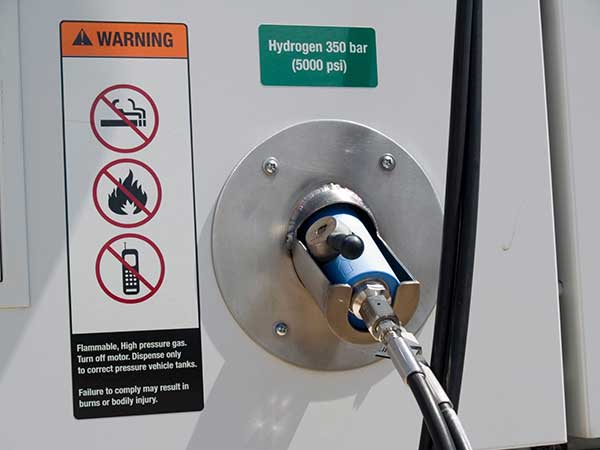“Big Oil” suffered some serious shocks this week. Shell lost a court case brought by climate activists as the Dutch court ruled that the company must significantly speed up its emissions reductions. ExxonMobil also saw a major upheaval with shareholders voting to elect two new directors to its board who they believe will force the company to do more to combat climate change.
Shell Ordered to Slash Emissions by 2030
Oil giant Shell says it will appeal the Dutch court’s landmark ruling that it must reduce its carbon emissions by 45% by 2030, relative to 2019 levels. Shell’s climate strategy had envisaged a reduction of 20% in emissions by 2030 and 45% by 2035.
The company said it had set a goal of net-zero emissions by 2050. It pointed to the billions of dollars it has invested in low-carbon technology, including electric vehicles, renewables, and biofuels, as evidence of its commitment to emissions reduction.
The lawsuit was filed against Shell in 2019 by a coalition of environmental groups that alleged the oil company was responsible for endangering human life.
The ruling, which Shell described as “disappointing,” is the first one against an oil company that requires it to revise its climate strategy.
The ruling will only affect Shell’s operations in the Netherlands but has the potential to have broader effects elsewhere. Analysts have interpreted it to mean that oil companies must now align their climate targets with those set by global climate policy — in particular, the Paris Agreement.
However, the company says that governments should be held accountable for slow progress on the issue of emissions reductions, not companies.
ExxonMobil Forced to Add Pro-Climate Directors to Board
Some of ExxonMobil’s largest shareholders sided with a hedge fund made up of climate activists to appoint directors to the company’s board who are favorable to the energy transition.
Two of the directors proposed by the hedge fund were voted in by shareholders, including major retirement funds whose members want the oil giant to take a more proactive approach to dealing with climate change.
Exxon has been viewed as stalling on the need for the energy transition and resisted calls for a radical reset of the composition of its board to deal with the climate crisis. The company pointed to its efforts to develop carbon capture projects and said the directors that were in place were best qualified for moving the company forward.
However, the activist shareholders said ExxonMobil was doing too little with regard to transitioning to renewable energy.
Engine No. 1, the hedge fund that proposed the change in directors, holds only 0.02% of ExxonMobil’s shares. In the boardroom battle, it also pointed to the oil company’s financial underperformance in recent years as evidence that a new slate of directors was needed to move with the times.
Court Rules Against Shutting Down Dakota Access Pipeline
A judge has ruled that the Standing Rock Sioux tribe has failed to adequately prove that the Dakota Access Pipeline running under the Missouri River would cause substantial harm to their fishing and drinking water.
The judge, therefore, declined to order Energy Transfer, the company that operates the pipeline, to stop operating until the U.S. Army Corps of Engineers completes a rigorous analysis of potential environmental dangers.
The judge also castigated the Corps for failing to take a definitive stance on the issue, particularly with regard to the pipeline’s running through a federal waterway without a permit. But that issue was outside the remit of his court, he added.
He has given the Standing Rock tribe until June 11 to file an appeal against the decision.
Energy Transfer has indicated that it will challenge the U.S. Army Corps environmental review of the pipeline in the U.S. Supreme Court.
The company has said shutting down the pipeline would mean that oil would have to be transported by rail, which is more expensive and would lead to a drop in output of 400,000 barrels daily and a loss of millions of dollars in revenue.
The pipeline would also cost more than $67 million annually to maintain once it ceases operation, the company said.
The pipeline began operating in 2017 after former President Donald Trump gave the green light for its construction, having decided there was no need for an extensive environmental impact assessment. It was constructed at a cost of nearly $4 billion and extends for more than 1,000 miles.
Scottish Port Plans to Import Green Hydrogen From Norway
An agreement between Scotland’s port Cromarty Firth and the Norwegian firm Gen2 Energy, which produces green hydrogen, has moved Scotland closer to its goal of becoming a renewable energy hub and hydrogen nation.
The memorandum of understanding, which was signed recently, will pave the way for Gen2 Energy to ship its hydrogen from the North Sea to the port, which will serve as its hub in the U.K. The hydrogen will then be distributed to customers throughout the U.K. by various modes of transportation.
Scotland has set a goal of producing 5 gigawatts of renewable energy by 2030.
The U.K. government has also announced plans to invest 60 million pounds into low-carbon hydrogen.
Gen2 Energy is expected to start building its green hydrogen factory in the north of Norway in December 2023. It also has plans for a second, larger green hydrogen plant in the southwest of Norway.
White House Imposes Stricter Security Guidelines for Pipelines
The Transportation Security Administration has directed that pipeline operators and owners do an audit of their vulnerability to cybersecurity threats. They are now also required to report cyberattacks and employ a cybersecurity coordinator to work with the government.
Failure to comply will attract penalties as high as $7,000 a day.
The directive is the Biden administration’s response to the ransomware attack on the Colonial Pipeline in early May that led to a shutdown in the facility and serious fuel shortages.
Natural gas facilities and hazardous liquids facilities that previously were given the option to voluntarily comply with measures to contain cybersecurity risks now have 30 days to ensure compliance.
Dubai Launches Green Hydrogen Project
Dubai has launched its first green hydrogen project powered by solar energy.
The project, which is a collaboration between Siemens Energy, the Dubai Electricity and Water Authority, and Expo 2020 Dubai, will facilitate long-term storage of renewable energy while also providing a means to test different uses of hydrogen in industry and transportation.
In a bid to create a green hydrogen economy, the UAE has opened its market for local use of hydrogen-powered vehicles, and the new project will lend support to that initiative.
The country’s climate minister said the costs of hydrogen production will likely fall by more than 60% by the year 2040, as global production continues to grow. The UAE is keen on gaining a foothold in this market while helping to protect the environment.
ADB Lends Pakistan $300 Million for Hydropower Project
The Asian Development Bank (ADB) is lending Pakistan $300 million to help fund a $755 million hydropower project.
The 300-megawatt Balakot Hydropower Project is expected to lessen the country’s dependence on fossil fuels and increase its energy security while providing a cheaper source of energy. The ADB loan will run for 27 years and has an interest rate of 0.5% per annum.
Pakistan sees the project as increasing the climate resilience of its power supply, with the hydropower plant adding 1,143 gigawatt hours annually to the nation’s supply.
Its construction is expected to provide 1,200 jobs and offer opportunities for skills development for the local labor force.
Pakistan is said to have significant hydropower resources but less than 20% of it is utilized.
Plans for Offshore Wind Power in North Sea
The North Sea, an area synonymous with oil and gas, is now becoming a major hub for offshore wind power.
Norway’s state oil company Equinor is collaborating with two other firms in presenting an application to develop a large-scale offshore wind energy project in Norway’s North Sea. The company says some of the world’s best wind resources are to be found there.
The Hornsea One wind energy project run by the Danish firm Orsted is located in the North Sea. It provides 1.2 gigawatts of energy and can supply enough power for 1 million homes.
RWE Renewables, one of Equinor’s collaborators, says that offshore wind power will play an important role in achieving the EU’s goal of net-zero emissions by 2050.
Opinion writer: Jewel Fraser
The opinions, beliefs, and viewpoints expressed by the various authors do not necessarily reflect the opinions, beliefs, or viewpoints of Interactive Energy Group, LLC (IEG) or its parent companies or affiliates and may have been created by a third party contracted by IEG. Any content provided by the bloggers or authors are of their opinion and are not intended to malign any individual, organization, company, group, or anyone or anything.
Brought to you by energysavings.com
All images licensed from Adobe Stock.
Featured image:



